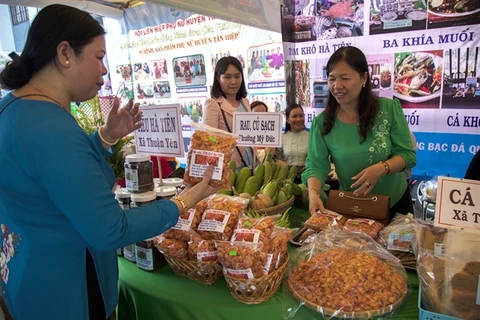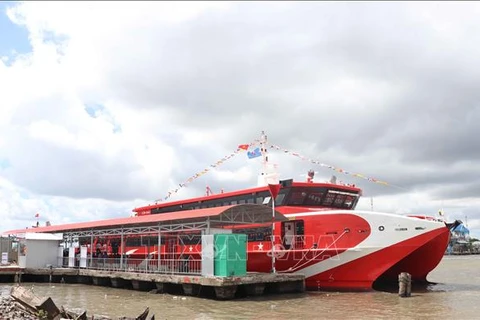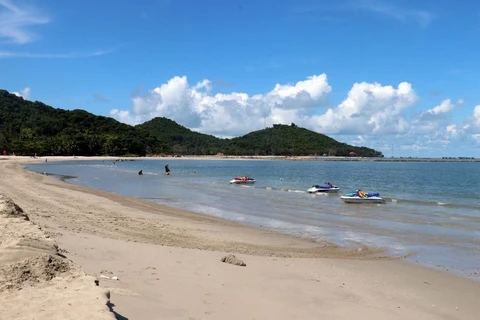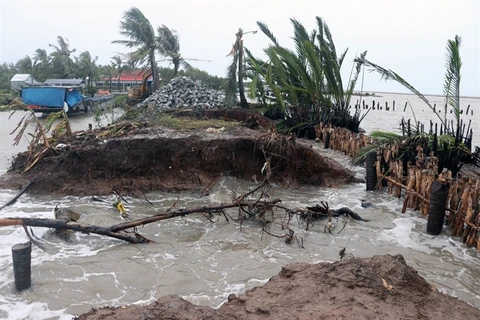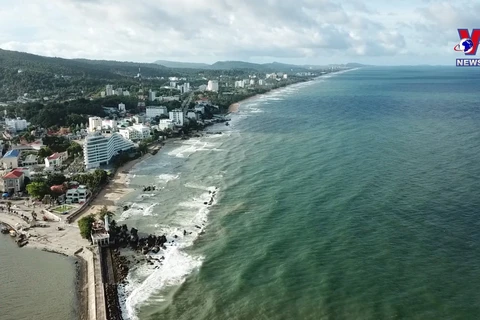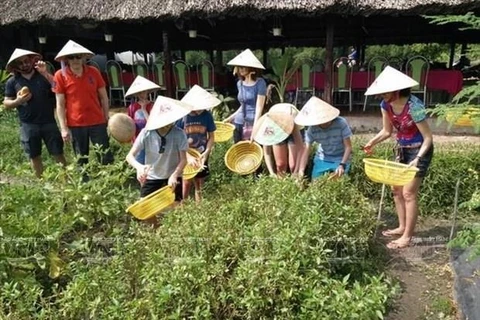Kien Giang (VNS/VNA) - The Mekong Delta province of Kien Giang has been developing a sustainable marine economy in recent years by taking steps to increase the output and value of its marine-based products.
Do Thanh Binh, Chairman of the provincial People’s Committee, said the province has been focusing on building industrial parks as well as urban areas in coastal areas, and promoting renewable energy and other new marine economy sectors.
The marine economy now accounts for nearly 74 percent of the province’s Gross Regional Domestic Product (GRDP).
The province has invested in infrastructure such as Phu Quoc international airport, coastal roads in rural areas, coastal erosion-prevention projects, and power-supply projects for islands.
It has also built sluice systems that help regulate salt and fresh water for agricultural production in coastal areas.
Binh said: “The building of infrastructure projects in coastal areas and islands has contributed positively to the province’s socio-economic development, especially the marine economy. The spiritual and material lives of residents have improved and the rate of poor households has fallen rapidly."
In recent years, the province has developed offshore fishing and aquaculture in coastal areas, with a catch of 500,000-600,000 tonnes of seafood and an aquaculture output of more than 217,000 tonnes each year.
The province’s seafood catch accounts for 40 percent of the delta’s total seafood catch and 16 percent of the national seafood catch.
Nguyen Van Tam, Director of the province’s Department of Agriculture and Rural Development, said the province has promoted off-shore fishing but has not increased the number of fishing ships.
The province has either banned or strictly punished fishing activities that violate regulations and cause depletion of seafood resources, and has strengthened protection of near-shore seafood resources, he said.
The province has also provided vocational training to near-shore fishermen and helped them switch to other jobs.
It is completing the installation of black box devices that help monitor trips on nearly 4,000 off-shore fishing ships. The device provides information on permitted fishing areas, supports search and rescue efforts, and traces the origin of caught fish.
Aquaculture zones
The province has zoned aquaculture development by setting up breeding areas in coastal areas and islands, and applying advanced techniques to the farming of aquatic species.
The province breeds mostly marine fish in about 4,500 floating cages at sea, with an output of 3,550 tonnes last year.
Caged aquaculture is located mostly in the island communes of Kien Hai, Phu Quoc and Kien Luong districts and Ha Tien city.
Farmers breed mostly cobia, grouper, red drum and pomfret. The province is also successfully breeding more kinds of marine species like giant trevally and lobsters which have high economic value.
To develop sustainable marine aquaculture, the province will set up suitable breeding zones for each sea area and provide advanced farming techniques to farmers, according to its Department of Agriculture and Rural Development.
Quang Trong Thao, deputy director of the department, said the province has made investments to ensure the quality and supply of fish fry of various marine species for breeding.
The province has also promoted cage-bred fish to domestic and foreign markets, and has strengthened research and applied high-technology to marine fish breeding.
Calls for investment
Kien Giang has urged domestic and foreign companies to invest in breeding marine fish with advanced breeding techniques. Investment in breeding high-value aquatic species like lobster, pearl oysters and babylon snails has also been encouraged.
The province has called for investment in renewable energy and other new marine economy sectors like resource exploitation, marine biotechnology, maritime safety and inspection, and high-tech marine products and services.
Renewable energy investment includes wind, gas, wave and solar power. Investment priority is given to renewable energy on islands to serve production and household use.
The province is also developing marine medicinal materials and the cultivation and processing of seaweed, algae and seagrass.
It has plans to develop industrial parks and clusters to attract investment and to develop coastal urban areas.
Binh said that new technical and social infrastructure would be built in the coastal areas.
Phu Quoc Island will be developed into a sea tourism city that meets national and international standards, he said.
The province will establish urban areas in the island district of Kien Hai to promote the development of islands, he said.
Rach Gia city, which will be developed into one of four urban areas in the delta’s key economic zone, is expected to become the delta’s trade and marine economy hub.
With a coastline of more than 200 kilometres and 143 islands, Kien Giang has great potential for marine economy development.
Under the province's plan, the marine economy will account for 80 percent of its GRDP by 2030. It also targets having an average income per capita in coastal districts and cities that is 1.5 times higher than the average per capita income of the province.
The province targets an increase of 30-50 percent of tourists in 2030 compared to 2020, and expects seafood exports to increase by an average of 10 percent a year in the 2021-30 period. All of its islands with human settlement will have adequate power supply, fresh water, telecommunications, healthcare and education services by 2030./.
VNA

